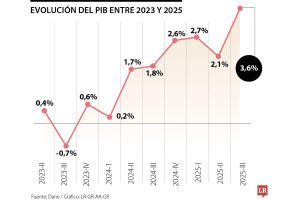Markets rallied across the board last week, with the S&P 500 Index closing in on its all-time high, in response to the Federal Reserve’s surprising signal that interest-rate cuts are coming.
The central bank’s pivot, which suggested an end to its historic policy-tightening campaign, may support a near-term broadening of the market’s gains. However, we believe the Fed’s move last week may be premature and not based on economic fundamentals, for three reasons.
1. Wage growth remains high.
The Fed made a mistake on inflation in 2021, when it assumed that price pressures were merely transitory and stemmed mostly from supply constraints. It may be making the same mistake now as it assumes that inflation is coming under control. To the contrary, we’ve seen sticky inflation in areas directly linked to robust consumer demand. Take “super-core” inflation, a measure that strips out energy and housing prices, leaving mainly services such as haircuts, cleaning services and childcare. That gauge has been hovering around 4% since June, helping keep broader inflation measures above the Fed’s 2% target. The central bank has asserted that super-core inflation is driven by wage pressures in these labor-intensive services, and that this pressure should moderate as more people enter the labor market. But data show average hourly earnings have been growing at 4% year-over-year and even re-accelerated month-over-month in November, to a pace of 0.4%. If the growth in wages for the people performing these services remains high, it’s likely that prices will also.
2. Businesses and consumers still have money to spend.
The Fed may be overlooking just how much money is still circulating in the U.S. financial system, after tremendous monetary and fiscal stimulus early in the pandemic. Despite decreases in recent months, the level of money—measured by M2, which includes cash, savings deposits and retail money-market funds—remains around $20 trillion, running about $4 trillion higher than long-term trends. Even after more than 5 percentage points of Fed rate hikes, this excess liquidity continues to present inflation threats, as the people and businesses holding this excess cash compete for a limited pool of goods and services.
3. The economy keeps chugging along.
While the economy is likely to cool, the Fed has not yet squashed growth to the degree that may warrant interest-rate cuts. With the exception of a slumping housing market, key consumption metrics are still running 5% to 10% above normal, due in large part to massive fiscal spending. Recent data also showed retail sales were stronger than expected in November, reflecting still-resilient consumer spending as the holiday shopping season kicked off.
Investing for the Pivot
All told, we continue to question the timing of the Fed’s pivot and urge investors to remain cautious. However, we do see the move causing notable shifts in equity markets, at least in the short term.
Gains could fade for mega-cap stocks in industries such as technology. With that in mind, investors should consider adding exposure to U.S. stocks outside of the market’s biggest names, known as the “Magnificent 7,” by either buying the equal-weighted S&P 500 Index or actively picking individual securities. In doing so, look for cyclical stocks, which tend to perform better in a strong economy, and value-style stocks, which seem to be priced lower than they should be relative to their fundamentals.
In terms of sectors, financials, industrials, utilities, consumer staples, healthcare and defense-industry stocks are among our favored investments, especially until the Fed’s first interest-rate cut. In addition, continued U.S. dollar weakness may help support a resurgence in non-U.S. stocks, especially emerging markets.







